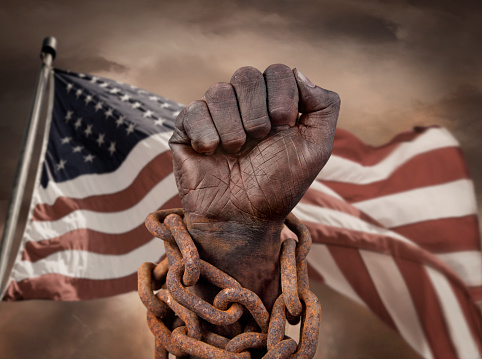My thirst for more history and truth about the journey of black folks in this country brought me to my next audio book titled How the Word is Passed–A Reckoning With the History of Slavery Across America, by Clint Smith. What a fascinating book!
A significantly researched exploration of the heritage of slavery and its imprint on centuries of our American history, How the Word Is Passed offered me a new understanding of the hopeful role that memory and history can play in making sense of our country and how it has come to be–allowing us to gain more compassion. Clint’s visit to several plantations became quite enlightening to me since I have yet to visit such a property where numerous men, women and children were enslaved.
One such visit/story was to the Monticello Plantation in Virginia, the estate where Thomas Jefferson wrote letters embracing the urgent need for liberty while enslaving more than four hundred people. Clint also shared the story of the Whitney Plantation, one of the only former plantations devoted to preserving the experience of the enslaved people whose lives and work sustained it. While other plantations in Louisiana remain the sites of formal celebrations and weddings, where tours of former slave estates romantically center on the architectural highlights of the old homes, where you are still more likely to hear stories of how the owners of the land “treated their slaves well” than you are to hear of the experiences of actual enslaved people, the Whitney stands apart by making the story of the enslaved the core of the experience.
Clint also visited several museums where he was struck by one museum’s remarkable ability to capture so much of Black America’s complex relationship with this country—and how so many of the exhibits complicated various accounts of US history that are misrepresented one way or another. He walked past a statue of Thomas Jefferson, standing before a tower of bricks, each bearing the name of a person Jefferson enslaved, including his own children, past a photograph of four men dangling from a single tree. In the far corner of the museum, on the floor overhanging Jefferson’s statue, was a small room dedicated to Emmett Till. Till, as many know, was a fourteen-year-old boy from Chicago who was visiting his family in Money, Mississippi, in 1955 when he was brutally murdered by two white men and his body thrown in the Tallahatchie River. Carolyn Bryant, a white woman, said Till had whistled at her, grabbed her, and made lewd comments to her in the grocery store where she worked as a cashier. The following words from his book really touched my soul as Clint recounted his own personal history:
“My grandparents’ stories are my inheritance; each one is an heirloom I carry. Each one is a monument to an era that still courses through my grandfather’s veins. Each story is a memorial that still sits in my grandmother’s bones. My grandparents’ voices are a museum I am still learning how to visit, each conversation with them a new exhibit worthy of my time.
“When I think about the history of slavery and racism in this country, I think about how quick we are to espouse notions of progress without accounting for its uncertain and serpentine path. I think of how decades of racial violence have shaped everything we see, but sometimes I find myself forgetting its impact on those right beside me. I forget that many of the men and women who spat on the Little Rock Nine are still alive. I forget that so many of the people who threw rocks at Dr. King are still voting in our elections. I forget that, but for the arbitrary nature of circumstance, what happened to Emmett Till could have happened to my grandfather. That the children who threw food at my grandmother and called her a nigger are likely bouncing their own great-grandchildren on their laps. That the people who lynched a man in my grandfather’s town may have had children who inherited their parents’ hatred. That the woman who stood alongside the Obamas to officially open the National Museum of African American History and Culture was the daughter of a man born into slavery.
“We can learn this history from the scholars who have unearthed generations of evidence of all that slavery was; from the voices of the enslaved in the stories and narratives they left behind; from the public historians who have committed themselves to giving society language to make sense of what’s in front of them; from the descendants of those who were held in chains and the stories that have been passed down through their families across time; from the museums that reject the temptation of mythology and that prioritize telling an honest and holistic story of how this country came to be; from the teachers who have pushed back against centuries of lies and who have created classrooms for their students where truth is centered; by standing on the land where it happened—by remembering that land, by marking that land, by not allowing what happened there to be forgotten; by listening to our own families, by sitting down and having conversations with our elders and getting insight into all that they’ve seen.”
As the debate continues regarding how this part of our history should be taught–at some point, Warriors, it is no longer a question of whether we can learn this history but whether we have the collective will to reckon with it.
Covid19 Humor: Sign says: Covid Testing in the Rear–a guy passing the sign surprisingly states “Hey, I thought it was supposed to be a nasal swab”.

